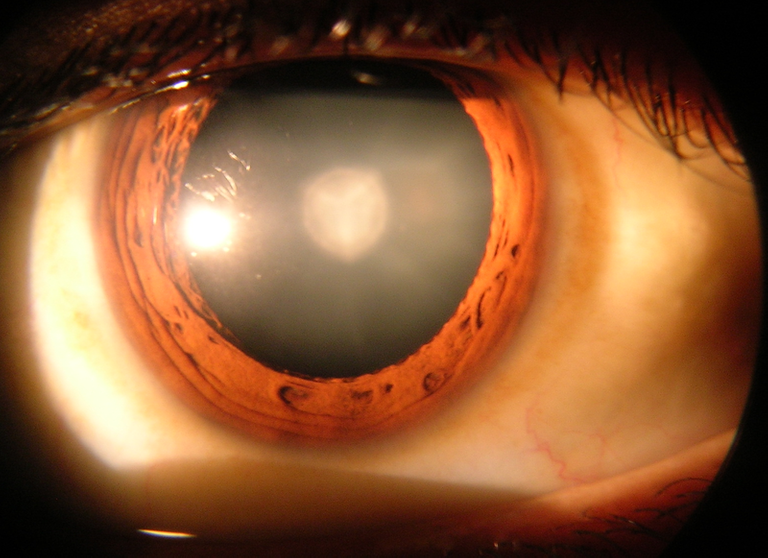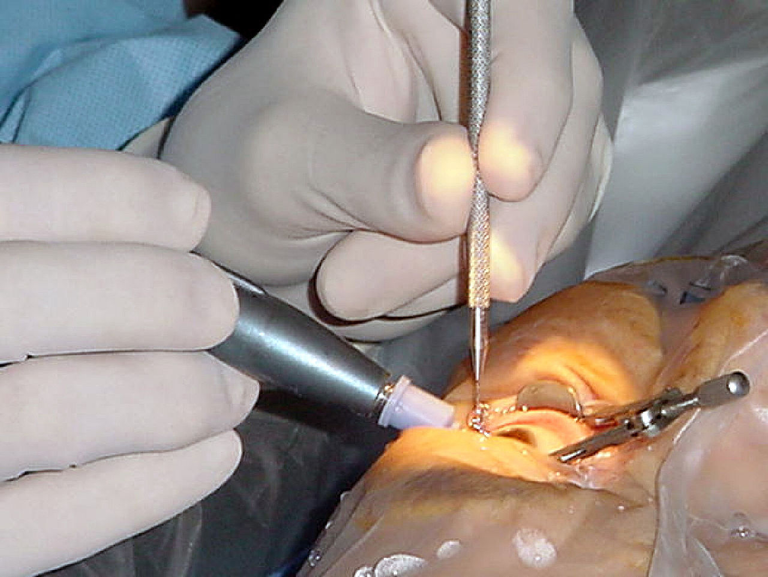
Source: Wikipedia

Source: Wikipedia
Cataract is the leading cause of blindness worldwide, yet it remains relatively unknown. In this post, we will explore what cataract is, how it affects those who have it, and what can be done to prevent it.
Cataract is a clouding of the eye’s lens that leads to decreased vision. It is most common in older adults, but can also affect young people and even babies. Cataract is usually treatable with surgery, but if left untreated, it can cause blindness.
While cataract is largely preventable, many people do not know how to prevent it or even that it exists. We will explore cataract and its effects in order to raise awareness about this silent blindness.
What is a Cataract?
Cataract is a condition that causes the lens of the eye to become progressively opaque, resulting in decreased vision. It is the most common cause of blindness worldwide, and affects people of all ages. Depending on the severity, cataracts can be treated with surgery, glasses, or contact lenses.
How does it Occur
Cataracts occur when the proteins in the lens of the eye clump together and form deposits that cause the lens to become cloudy. This cloudiness can eventually lead to complete opacity and blindness if left untreated. Cataracts typically develop slowly and painlessly, and can affect one or both eyes.

Source: Wikipedia
Early symptoms of cataracts include blurry or hazy vision, poor night vision, double vision in one eye, faded colors, and increased sensitivity to glare. If you experience any of these symptoms, you should see an eye doctor for a comprehensive eye exam.

Source: Pexels
Cataracts are usually diagnosed through a combination of a physical examination, medical history review, and tests such as visual acuity testing and dilated fundus examination (to check for changes in the appearance of the back of your eye). Treatment options include surgery, glasses, or contact lenses.
Surgery is the only way to remove a cataract from your eye. The surgeon will make small incisions in your eye and then break up the cataract using ultrasound waves before removing it with suction. An artificial intraocular lens (IOL) is then inserted
The Different Types of Cataracts
Based on location, there are four main types of cataracts: nuclear, cortical, posterior subcapsular, and congenital.
Nuclear cataracts form in the center of the lens and are usually associated with aging. Cortical cataracts start at the edge of the lens and work their way to the center. Posterior subcapsular cataracts form on the back surface of the lens. Congenital cataracts are present at birth.
Most cataracts are a result of aging and are not painful. Cataracts cause blurry vision and increased sensitivity to light. If left untreated, cataracts can eventually lead to blindness.
Cataract surgery is a common procedure that is typically very successful in restoring vision. During surgery, the surgeon removes the cloudy lens and replaces it with an artificial one.
Symptoms of Cataracts
Cataracts typically develop slowly and painlessly, and often go unnoticed in the early stages. As the cataract matures, symptoms may become more noticeable. These can include:
-Blurry vision
-Colors appearing faded or less vibrant
-Glare or halos around lights
-Poor night vision
-Double vision in one eye
Causes of Cataracts
There are many possible causes of cataracts, but the most common cause is simply aging. As we age, the proteins in our eyes start to break down, and this can cause the formation of cataracts. Other risk factors for cataracts include smoking, diabetes, and exposure to ultraviolet (UV) light.
Cataracts can also be caused by trauma to the eye, certain medications, or congenital defects. In some cases, cataracts may form for no known reason.
Treatment for Cataracts
There are a number of different treatment options for cataracts, depending on the severity of the condition. In some cases, glasses or contact lenses may be all that is needed to improve vision. For more advanced cataracts, surgery may be required.

Source: Wikipedia
Surgery is the only way to remove a cataract and restore vision. The procedure is relatively simple and safe, and most people who have it experience a significant improvement in their vision. There are two main types of surgery for cataracts:
-Phacoemulsification: This is the most common type of surgery for cataracts. It involves using ultrasonic waves to break up the cataract so it can be removed through a small incision in the eye.
-Extracapsular extraction: This type of surgery is used for more advanced cataracts. It involves making a larger incision in the eye so the entire cataract can be removed.
Prevention of Cataracts
Cataracts are a leading cause of blindness worldwide, but fortunately, they are also preventable. Here are some tips for preventing cataracts:
-Wear sunglasses or eye protection when outdoors. Ultraviolet (UV) light from the sun can damage the lens of the eye and lead to cataracts.
-Eat a healthy diet. A diet rich in antioxidants may help protect against cataracts. Foods that are high in antioxidants include fruits, vegetables, and whole grains.
-Don't smoke. Smoking is a major risk factor for developing cataracts.
-Maintain a healthy weight. Obesity increases the risk of developing cataracts.
-Have regular eye exams. An eye exam can detect cataracts in their early stages and allow for treatment to prevent further progression
Conclusion
Cataract is a growing problem worldwide, as the population ages. It is important to be aware of the symptoms of cataract, so that you can seek treatment early and avoid vision loss. If you think you or someone you know may be developing cataracts, make an appointment with an eye doctor for a comprehensive eye exam.
References
- https://en.m.wikipedia.org/wiki/Cataract
- https://www.medscape.com/resource/cataract-refractive-surgery
- Davidson's Principles and Practice of Clinical Medicine